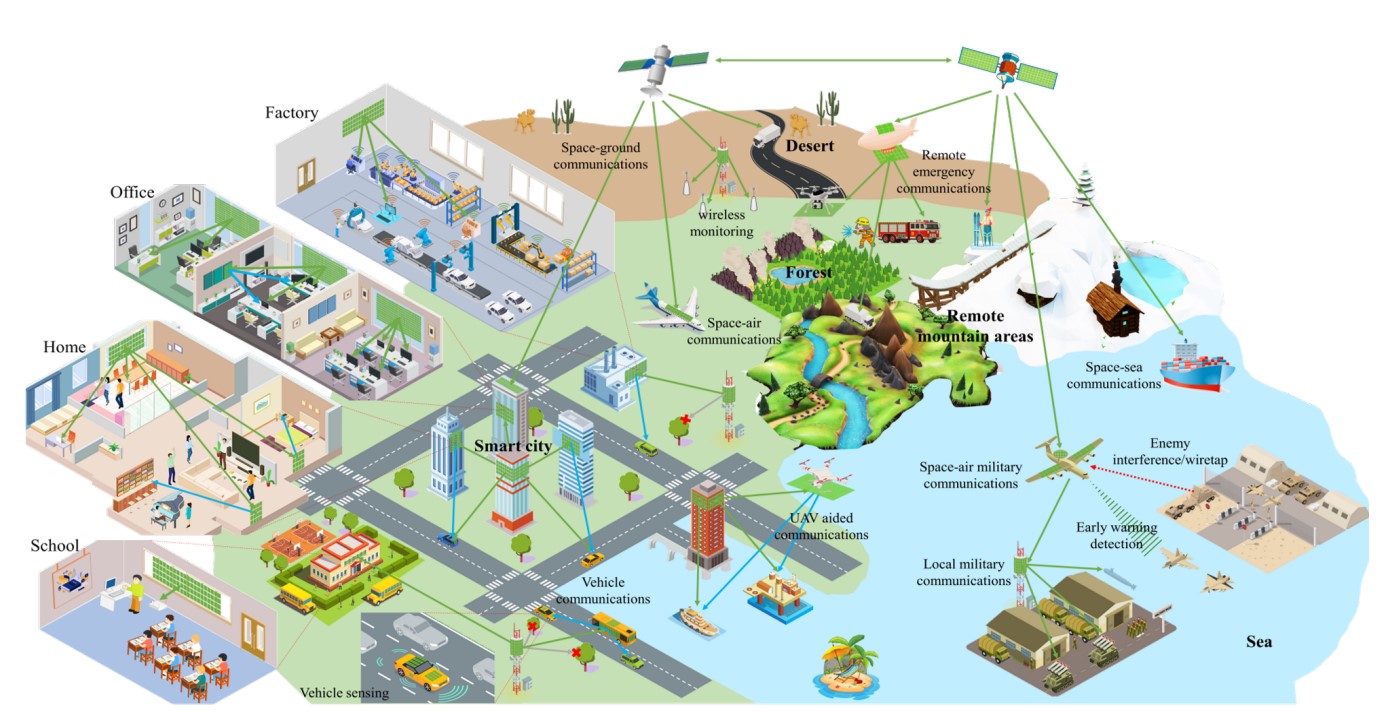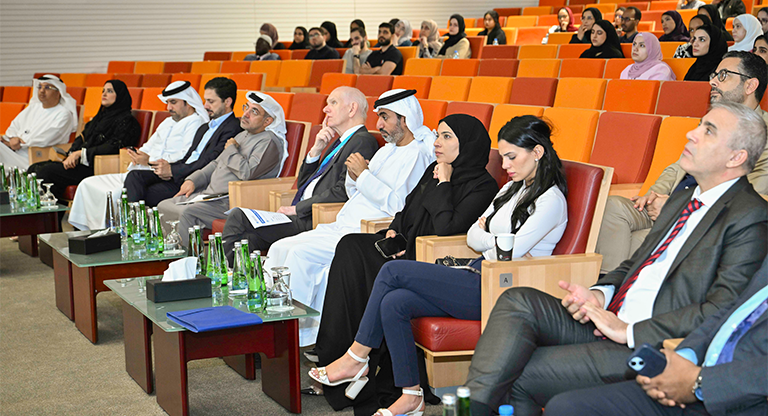
Holographic MIMO technology offers potential to revolutionize connectivity and launch the 6G networks of the future, says Khalifa University’s Prof. Merouane Debbah, but it’s not without its challenges.
The landscape of wireless communication underwent a transformative shift with the advent of fifth-generation (5G) wireless networks, now being rolled out globally. However, the ambitions of 5G are already paving the way for the sixth generation (6G) wireless networks.
A team of researchers including Khalifa University’s Prof. Merouane Debbah has investigated a potential and promising technology for supporting the expected extreme requirements of 6G communication systems: the holographic multiple-input multiple-output (HMIMO). The team believe this technology has the potential to actualize holographic radios with reasonable power consumption and fabrication costs.
Prof. Debbah collaborated with researchers from Nanyang Technological University, Singapore; National and Kapodistrian University of Athens, Greece; Zhejiang University and Zidian University, China; and Princeton University. Their findings into the theoretical foundations, enabling technologies, and future directions of HMIMO technologies were published in IEEE Communications Surveys and Tutorials, a top 1% journal for electrical and electronic engineering.
MIMO is a technology used in wireless communications where multiple antennas are used at both the transmitter and receiver ends of the communication circuit. The main idea behind MIMO is to increase the system’s capacity and reliability without needing additional bandwidth or increased transmission power. MIMO is a key component in modern wireless communication, including Wi-Fi and cellular networks. It’s one of the technologies that make high-speed internet and data transfer rates possible in today’s wireless networks.
“6G is envisioned to offer extremely immersive experiences, full dimension coverage, extremely low latency, ultra-high reliability and synthesized functionalities of communications, localization, control and computing with native intelligence and integrated security,” Prof. Debbah says. “Compared to 5G, 6G is expected to provide tremendous performance enhancements, offering from 100 to 1,000 times higher peak data rates, among other improvements.”
Forecasts for 6G networks include services expanding to all environments, including space, and the emergence of applications like holographic communication and fully autonomous driving. To meet these targets, significant technological advancements are required.
The HMIMO concept is a fusion of advanced antenna technologies, such as metamaterials and metasurfaces, with the foundational theories of communications and electromagnetic waves. In contrast to conventional massive MIMO (mMIMO) systems, HMIMO surfaces offer a nearly continuous aperture. This enables the formation of sharper beams and the manipulation of electromagnetic waves with incredible flexibility. They are also simpler, more energy-efficient and less costly than the large, power-hungry devices used in mMIMO.
“The HMIMO is facilitated by ultra-thin, extremely large, and nearly continuous surfaces that incorporate reconfigurable antennas or metamaterials,” Prof. Debbah explains. “Such surfaces comprising dense electromagnetic excited elements are capable of recording and manipulating impinging fields with utmost flexibility and precision, as well as with reduced cost and power consumption.”
The research team recognizes HMIMO surfaces represent a groundbreaking advancement in wireless communication and are capable of supporting the extreme requirements of 6G networks. However, despite its promising potential, HMIMO faces several technical challenges, including the complexity of designing and manufacturing these surfaces, developing suitable signal processing algorithms, and integrating them into existing wireless infrastructure.
“We believe these challenges will drive unprecedented research in the future,” Prof. Debbah says.
Jade Sterling
Science Writer
16 January 2024






